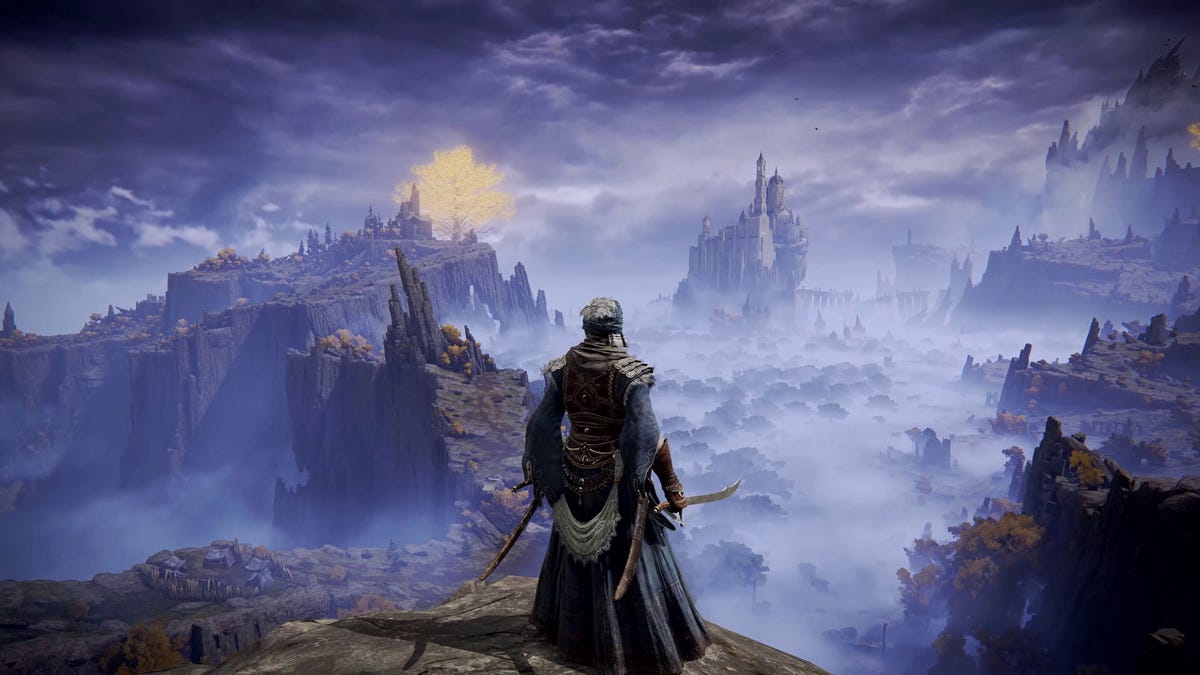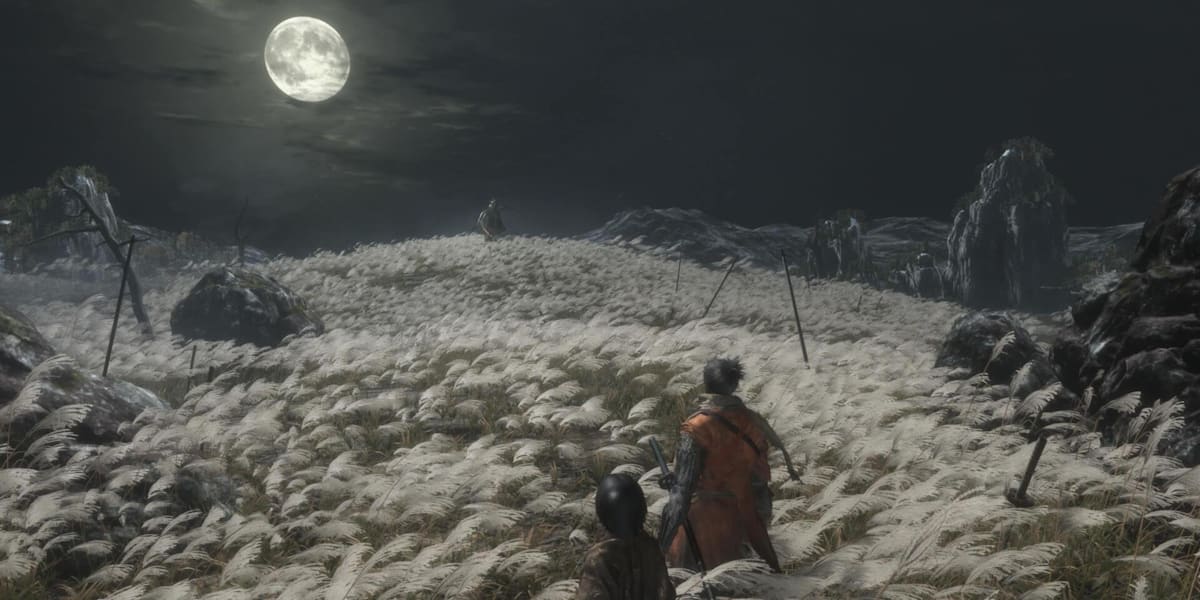Vic
Augur

I mean it's a JRPG for kids what do you expect

It's rated TeenI mean it's a JRPG for kids what do you expect

ESRB Teen means 13 and older, that's "kids" to me.It's rated TeenI mean it's a JRPG for kids what do you expect
Alcohol Reference, Blood, Mild Language, Suggestive Themes, Use of Tobacco, Violence





He worked hard for it.No wonder you got that tag.


I think it has more to do with Starfield's graphics being shit for 2004.



Doesn't look that spectacular.I think it has more to do with Starfield's graphics being shit for 2004.




why are people so in love with zelda games?Earlier in my gamedev days I used to read blogs and stuff about making games look good. Maybe if you've played any of my games you would say that I should keep studying. At least I remember from those days coming across this blog: https://ventspace.wordpress.com/2017/10/20/games-look-bad-part-1-hdr-and-tone-mapping/
Mass Effect 1 planets look better than thisI think it has more to do with Starfield's graphics being shit for 2004.

Fascinating. I have always wondered why they look so, so awful. It is like an innate instinct. "This looks like garbage." - main subconscious thought while playing and probably why we are all drawn to older stuff for the most part. Also why Japanese games still look good - they never lost their sense of aesthetic. Whereas western devs only have an assthetic.Earlier in my gamedev days I used to read blogs and stuff about making games look good. Maybe if you've played any of my games you would say that I should keep studying. At least I remember from those days coming across this blog: https://ventspace.wordpress.com/2017/10/20/games-look-bad-part-1-hdr-and-tone-mapping/
In short, a guy who knows a lot about cameras and film says that game devs today don't put any thought into the color and contrast of the scenes in their games. Most AAA games look like garbage, and here's a detailed multi-post explanation for why.



Man, Sekiro is a masterpiece. What an epic confrontation. Truly a game I was waiting for as a child, that I dreamed of. And there it was. Yup. Been 'bout oh, over 4 years now. *takes a long drag* Yep...Was true kino.I don't think that the cel shaded graphics of breath of the wild are looking good at all
but fromsoft games do indeed look really good


the mid 90's went through a dark period when all the game companies filled the cd-roms full of poorly digitized Z-list Hollywood actorsI literally cannot enjoy modern (post-modern) CRPGs anymore
If I wanna watch a fucking movie, I'll go to the cinema. If I wanna read a book, I'll read a book. If I want GAMEPLAY I'll play a GAME.
When I play old school games like Wizardry or Dark Sun, I really feel great
No one is holding your hand. No voice acting. No cutscenes. Just this abstracted gameplay which invokes this dreamlike feeling. Games nowadays are oversimulated.
In short, a guy who knows a lot about cameras and film says that game devs today don't put any thought into the color and contrast of the scenes in their games. Most AAA games look like garbage, and here's a detailed multi-post explanation for why.
But are the games beautiful? Maybe the average consumer thinks so.I think he is missing the point by a mile. Disregarding all the common sense reasons (like games being targeted at minds that still respond better to some vibrant colors than a well thought out scene), even from an artistic pov, it's better to register as a beautiful videogame than a shitty photo/film/offline render/paiting.
A statue then? But I agree, one of the challenges in still photography is to capture great light angles. The object you photograph may well look terrible when the light comes from any other angle. In fact you can often see that the same scene in a videogame with day/night cycle looks terrible in the harsh midday "sunlight" (just like reality), and much more pleasing in late afternoon.You still can't get close to those unless your game is stylized/fixed camera or some other way you can cut rendering requirements a lot, which none of the examples are.
I think when people say "movielike" they mean lack of player agency, such as during cutscenes or the corridor in that Tomb Raider video (though it looks like a tutorial level).I was watching this playthrough for the Tomb Raider reboot, because I didn't pay any attention to it when it came out, and it's really hard to describe the gameplay as movie-like. You just go through some corridor and watch things happen around you, occasionally pushing some button at a prompt. I don't remember that in Indiana Jones.
You mean in a cutscene? Otherwise camera angles normally result from the player's movements, that the developer has only limited control over.A real cinematic game would highlight the torch with a certain camera angle
I think when people say "movielike" they mean lack of player agency, such as during cutscenes or the corridor in that Tomb Raider video (though it looks like a tutorial level).I was watching this playthrough for the Tomb Raider reboot, because I didn't pay any attention to it when it came out, and it's really hard to describe the gameplay as movie-like. You just go through some corridor and watch things happen around you, occasionally pushing some button at a prompt. I don't remember that in Indiana Jones.
You mean in a cutscene? Otherwise camera angles normally result from the player's movements, that the developer has only limited control over.A real cinematic game would highlight the torch with a certain camera angle
I'm not a cineast (almost never watch movies), in what way do Marvel movies differ from "cinema" in this context?Yes, I understand that. But it obscures the fact that videogame cutscenes and "cinematic gameplay"(a confusing term that gets thrown around a lot) are often not at all like movies, or at least not "cinema" in the way we normally talk about it--a collection of techniques and a distinct way depicting people or objects. I suppose they approach the kind of stuff you see in Marvel movies which, conversely, people often degrade as "videogame cutscenes".
I don't disagree with the premise of this thread, but I believe this is something that needs to be pointed out. Classic games were already "cinematic" and it's not necessarily a bad thing.
Placing an object like that seems easy when the player character walks into a room or corridor. Outdoors (or if a room has multiple doorways) it becomes much harder, since the player can approach the object from multiple directions. Some games will then resort (decline) to cutscenes, or will force the player's camera in a certain direction in-game (imagine someone trying to do that to you in real life), or display a "Look" prompt that will optionally turn your camera to where the developers want you to look.No, think of a game where an important object is put in a prominent place through a camera angle so it stimulates your curiosity. Resident Evil had lots of those, adventure games too. I'm drawing a blank here, but I'm sure you know what I'm talking about.
You can always "improve" those action sequences by turning them into pure cutscenes, instead of relying on fragile gameplay. And of course add shallow Hollywood-style relationship drama in even more cutscenes. But as long as the action things are actual gameplay (like in that Tomb Raider 1 video?) I don't think people mind.How much more Hollywood can you get?
I'm not a cineast (almost never watch movies), in what way do Marvel movies differ from "cinema" in this context?Yes, I understand that. But it obscures the fact that videogame cutscenes and "cinematic gameplay"(a confusing term that gets thrown around a lot) are often not at all like movies, or at least not "cinema" in the way we normally talk about it--a collection of techniques and a distinct way depicting people or objects. I suppose they approach the kind of stuff you see in Marvel movies which, conversely, people often degrade as "videogame cutscenes".
I don't disagree with the premise of this thread, but I believe this is something that needs to be pointed out. Classic games were already "cinematic" and it's not necessarily a bad thing.
Placing an object like that seems easy when the player character walks into a room or corridor. Outdoors (or if a room has multiple doorways) it becomes much harder, since the player can approach the object from multiple directions. Some games will then resort (decline) to cutscenes, or will force the player's camera in a certain direction in-game (imagine someone trying to do that to you in real life), or display a "Look" prompt that will optionally turn your camera to where the developers want you to look.No, think of a game where an important object is put in a prominent place through a camera angle so it stimulates your curiosity. Resident Evil had lots of those, adventure games too. I'm drawing a blank here, but I'm sure you know what I'm talking about.
Sound effects may also work better in a room, where you will be close to the sound and discern a clear source/direction. Outdoors you might be too far away to hear the sound, and in a maze perhaps you can't make out the direction (depending on how well the game engine handles audio reflections on walls etc).







